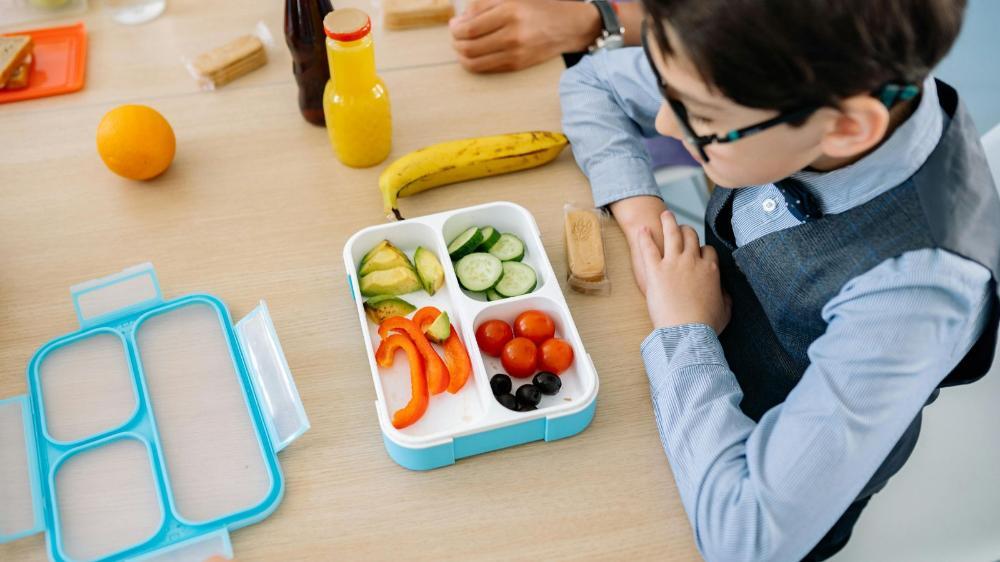June 5, 2025
Australian kids BYO lunches to school. There is a healthier way to feed students
Australia is one of the few high-income countries that does not provide children with a daily nutritious meal at school
Australian parents will be familiar with this school morning routine: hastily making sandwiches or squeezing leftovers into containers, grabbing a snack from the cupboard and a piece of fruit from the counter. This would be unheard of in many other countries, including Finland, Sweden, Scotland, Wales, Brazil and India, which provide free daily school meals to every child.
As families increasingly and a cost-of-living crisis, here’s how school lunches could help.
School lunches are important
During the week, children get a at school. What they eat during school hours has a significant impact on their health.
Australian children have than children in countries with .
As children’s diets affect physical and cognitive development, and , poor diet can also affect .
International research shows universal school meal programs – where all children are provided with a healthy meal at school each day – can improve both and outcomes for students.
The problem with BYO lunchboxes
In Australia, children either or buy food at the school canteen. But the vast majority of these lunches don’t meet kids’ dietary needs.
As a 2022 Flinders ¡Ò¡´ ”∆µapp report notes, are of poor nutritional quality. Half of students’ school-day food intake comes from junk food and fewer than one in ten students eat enough vegetables.
While these figures are based on 2011–2012 data, subsequent does not show significant improvements in children’s healthy diet indicators, including fruit and vegetable consumption. Time pressures on carers mean can be a default lunchbox choice.
At the same time, many families with school students their children with healthy lunches. Food insecurity — not having regular access to enough safe, healthy and affordable food — affects an estimated 58% of Australian households with children, and 69% of single-parent households.
Hot weather also raises concerns, as it’s hard to keep fresh food cool in schoolbags.
School meals programs in Australia
There are some historical examples of providing food to children at school in Australia. This includes the which ran from 1950s to 1970s. There were also wartime experiments in the 1940s. For example, the (a cheese and salad sandwich on wholemeal bread, with milk and fruit) was provided at school to improve the health of children.
Today, there is a patchwork of school food programs run by not-for-profit organisations providing and/or , and various schemes, including and programs.
There are also pilot schemes providing hot meals. For example, in Tasmania, the current feeds children in participating schools a hot lunch on some days of the week with . Evaluation of the program showed : healthier eating, calmer classrooms, better social connections from eating lunch together, and less food waste.
The 2023 parliamentary inquiry into food security recommended the federal government work with states and territories to consider the feasibility of a school meals program.
In May, the South Australian parliament into programs in preschools and schools to ensure children and young people don’t go hungry during the day.
What would it take to introduce school meals?
Rolling out universal school meal programs across Australian schools would between government and private sectors.
It could build on what already exists – including canteens, school gardens, food relief and breakfast clubs – to create a more consistent and inclusive system.
There’s a strong evidence base to guide this, both from and .
Decisions would have to be made about regulation and funding – whether to opt for a federally-funded and regulated scheme with federal and state cooperation, or a state-by-state scheme.
Funding mechanisms from international models include , caregiver-paid (but with subsidies for ) and arrangements between government and families.
Costs per child per day are , factoring in economies of scale. Some pilot programs report of around $5, but involve volunteer labour.
More to determine parent and community attitudes and model these funding options, including preventative health benefits.
Delivery models may also vary depending on each school’s size, location and infrastructure. This could include onsite food preparation, central kitchens delivering pre-prepared meals, or partnerships with not-for-profit providers.
Ultimately, providing food at school could save parents valuable time and stress, and ensure all Australian students can access the health and education benefits of a nutritious school meal.![]()
, Associate Professor, School of Law, ; , Senior Lecturer in Nutrition and Dietetics, , and , Senior Lecturer, Macquarie School of Social Sciences,
This article is republished from under a Creative Commons license. Read the .
UOW academics exercise academic freedom by providing expert commentary, opinion and analysis on a range of ongoing social issues and current affairs. This expert commentary reflects the views of those individual academics and does not necessarily reflect the views or policy positions of the ¡Ò¡´ ”∆µapp of ¡Ò¡´ ”∆µapp.
